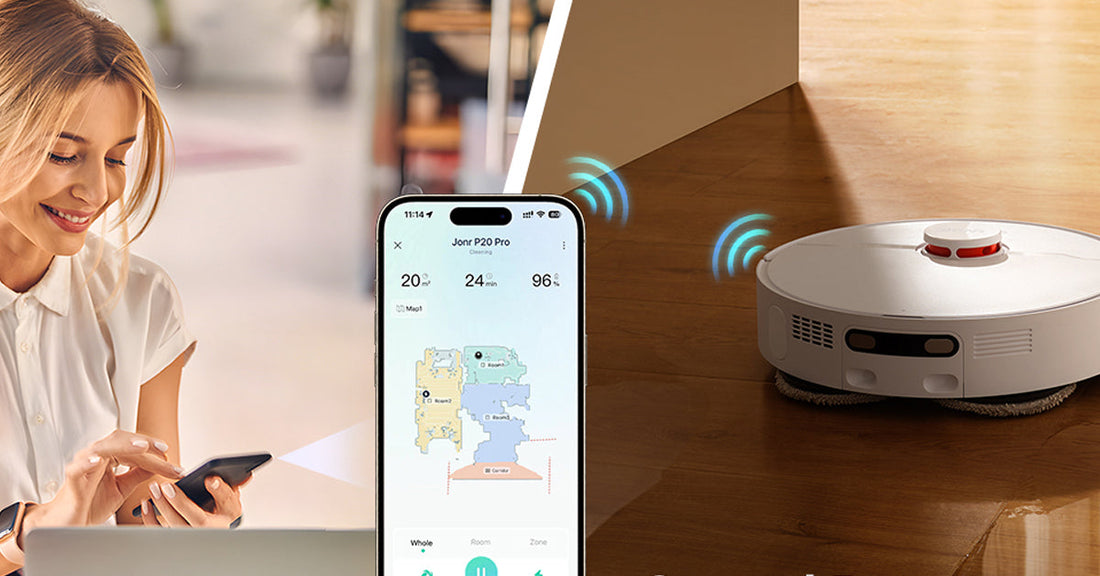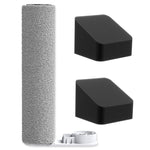With continuous technological advancements and evolving consumer demands, the robot vacuum cleaner industry is undergoing new transformations. In the future, robot vacuum cleaners will not just be cleaning tools but intelligent, multifunctional home assistants. Here are the potential future development trends for robot vacuum cleaners:
1. Artificial Intelligence (AI) and Machine Learning
Future robot vacuum cleaners will become more intelligent, leveraging artificial intelligence (AI) and machine learning to better understand home environments and optimize cleaning strategies. For example, they can identify different floor types, furniture layouts, and high-traffic dirty areas, automatically adjusting cleaning modes.
- Trend: Smarter cleaning path planning, adapting to complex environments.
2. More Powerful Sensors and Navigation Technologies
Future robot vacuum cleaners will be equipped with more advanced sensors and navigation systems, such as 3D vision and Time-of-Flight (ToF) sensors, to improve obstacle recognition and positioning accuracy. They will more precisely avoid small objects (like wires or toys) and clean narrow spaces.
- Trend: Higher precision navigation, reducing jams and missed spots.
3. Multifunctional Integration
Future robot vacuum cleaners will integrate more functions, such as sterilization, air purification, and even home monitoring. Automatic vacuum and mop combos will become standard, potentially incorporating UV sterilization and fragrance release for a more comprehensive cleaning experience.
- Trend: All-in-one functionality to meet diverse needs.
4. Voice Control and Smart Home Integration
As smart homes become more popular, future robot vacuum cleaners will integrate more deeply into smart home ecosystems. By connecting with voice assistants (like Amazon Alexa, Google Assistant, or Apple Siri), users can control cleaning tasks via voice commands. Additionally, robot vacuum cleaners can interact with other smart devices (like lights or air conditioners) for more efficient home management.
- Trend: Seamless integration into smart homes, offering more convenient control.
5. Longer Battery Life and Fast Charging
Advancements in battery technology will enhance the battery life of robot vacuum cleaners. Future models may feature higher-capacity batteries or more efficient energy management systems, along with fast-charging technology to reduce downtime.
- Trend: Longer operation time, higher efficiency.
6. Eco-Friendliness and Sustainability
With growing environmental awareness, future robot vacuum cleaners will focus more on sustainability. For example, they may use recyclable materials, low-energy designs, and modular components to reduce electronic waste and environmental impact.
- Trend: More eco-friendly design and production practices.
7. Personalized and Customized Cleaning
Future robot vacuum cleaners will emphasize personalized experiences. Users can customize cleaning schedules, modes, and intensity based on their needs. For instance, they can provide tailored solutions for pet owners, allergy sufferers, or families with children.
- Trend: Meeting personalized needs, enhancing user experience.
8. More Efficient Pet Hair Cleaning
For pet households, future robot vacuum cleaners will focus more on pet hair cleaning. They may feature stronger suction, tangle-free brushes, and high-efficiency filtration systems to ensure thorough removal of pet hair and allergens.
- Trend: Designed for pet households, solving pet hair challenges.
9. Compact and Portable Design
Future robot vacuum cleaners may become more compact and portable to suit smaller apartments or specific cleaning scenarios. They may also feature more flexible charging and storage options.
- Trend: Smaller designs for diverse home environments.
10. Data-Driven and Smart Analysis
Future robot vacuum cleaners may collect home environment data through sensors and cameras, generating cleaning reports. This data can help users understand home hygiene conditions and even provide improvement suggestions.
- Trend: Data-driven cleaning solutions for better home health.
11. Lower Costs and Wider Accessibility
As technology matures and production scales up, the cost of robot vacuum cleaners will gradually decrease, making them a standard cleaning tool for more households. Future products will offer higher cost performance, meeting the needs of different consumer segments.
- Trend: More affordable prices, accelerating adoption.
Conclusion
In the future, robot vacuum cleaners will evolve towards greater intelligence, multifunctionality, personalization, and eco-friendliness. They will not only be cleaning tools but an essential part of smart home ecosystems. With continuous innovation, robot vacuum cleaners will deliver more efficient, convenient, and healthy cleaning experiences. Whether for pet households, allergy sufferers, or general users, future robot vacuum cleaners will provide tailored solutions, becoming true home cleaning assistants.


